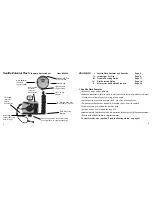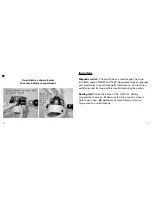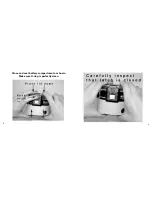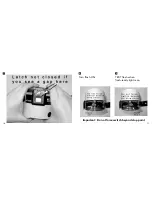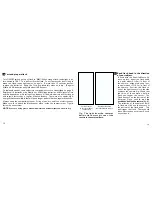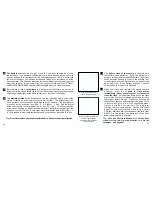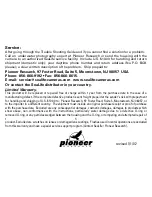
4
Main Benefits of SeaLife Flash
The main benefit of an
external
flash is more light
and brighter colors at a distance of 4 - 6 ft (1.2 m -
1.8 m) particularly at greater depths (below
60 ft / 18 m) or with little or no sunlight. Since the
flash is further away from the camera lens, you
will also reduce backscatter caused by small
particles in the water, like algae or plankton. For
even more light, and only in the clearest water,
the flash deflector can be removed adding extra
light from the camera’s
built-in
flash.
Another way to increase picture color and
brightness is to use two flash units mounted left
and right of the camera. This will also eliminate
shadows and extend the flash range to about 8 ft
(2.4 m). The ideal range is still about 5 ft (1.5 m).
Stretch out your fin to check your estimate of
the distance. Remember, your eye sees objects
33% closer than the actual distance.
NOTE:
The light reflection from different fish or
objects varies greatly – from not reflecting any
light like dark coral to a mirror-like reflection of
certain fish.
Photo taken without External Flash
Photo taken with External Flash
II. Instructions For Use
How easy it is...
your new SeaLife Flash
1
Prepare camera
before attaching camera to
flash. For film cameras, insert two new AA
batteries and a roll of 35mm film. Any
speed film, slide or print, will work from
100 ASA to 800 ASA, although 200 ASA
film speed is recommended for darker
water conditions. Turn camera power on
and seal housing. Refer to camera
instruction manual “Great Pictures Made
Easy” for complete details.
For SeaLife digital cameras, set camera to
“External Flash” mode. Make sure to use
freshly charged Ni-MH batteries and insert
a blank memory card.
2
Attach the camera to the flash mounting
bracket.
Then tighten mounting screw
(finger tight only).
5
Bottom Bracket
1
2


